Arguably the most famous fermented food in the world, there's not much as satisfying as making homemade, old-fashioned German sauerkraut in a crock. Today I'll walk you through the process of making simple lacto-fermented sauerkraut at home using a ceramic fermentation crock. You can use the method for regular green or red cabbage sauerkraut.
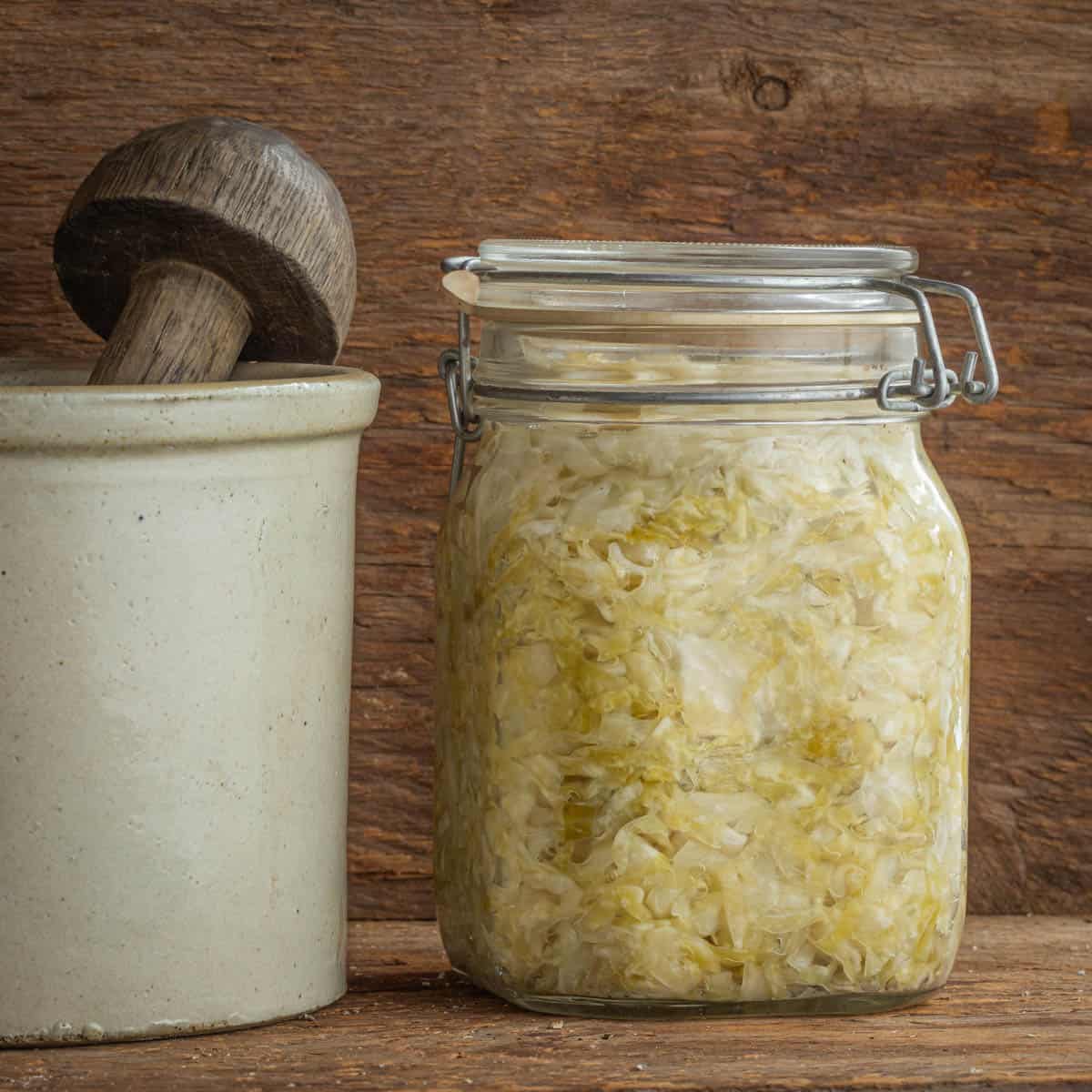
You can use any variety of cabbage to make sauerkraut, including regular green cabbage or red cabbage. If you haven't made it before, prepare the best sauerkraut you've ever had.
Sauerkraut Equipment
You'll need a knife or a cabbage slicer, a fermentation crock or a water seal crock, a weight or a heavy stone, a digital scale, and a mixing bowl. You'll also want a lid to cover the cabbage as it ferments.
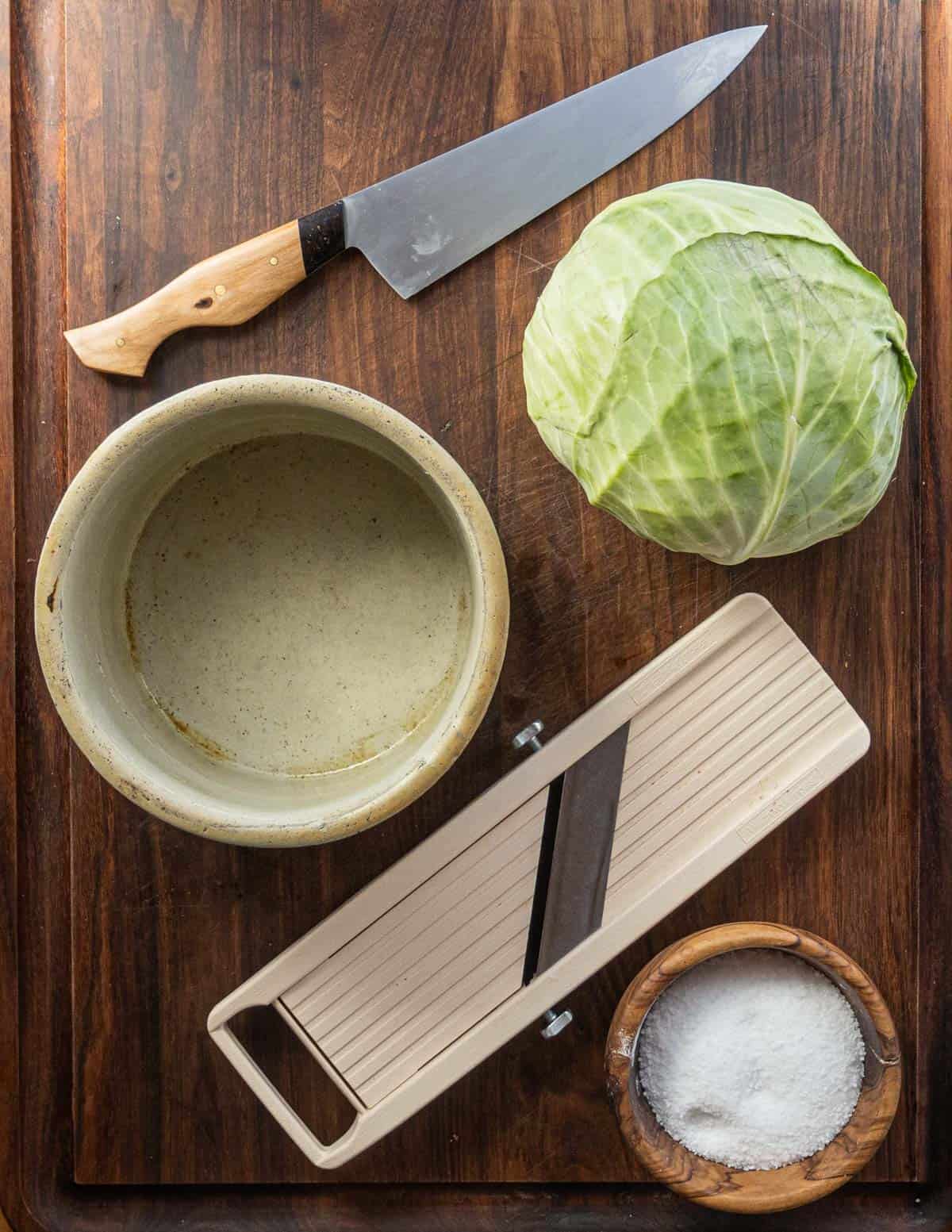
Some crocks come with lids, others, like mine pictured below don't have lids. If you don't have a lid, you can use a plate or cover the crock with a plastic bag in a pinch.
How Much Salt to add to Sauerkraut?
The most important thing is understanding the correct amount of salt to put in sauerkraut. While you can use an imperial measurement of around 1 teaspoon per pound, it's imprecise.
The best way to season cabbage with salt for sauerkraut is to weigh the salt using a digital scale, adding 2% of the cabbage's weight in salt. To do it, weigh the cabbage you'll ferment in grams, then multiply the weight of the cabbage by .02. For example, one pound of cabbage is 448 grams. 448 x .02 = 8.96, so you'll add around 9 grams of salt for each pound of cabbage.
How to Make Homemade Sauerkraut
First you'll take your cabbage and remove the outer leaves. I like to save them to put underneath the fermentation weights to help keep the cabbage underneath the brine.
Next the cabbage is shredded or thinly sliced. Cut the cabbage into quarters or ⅙ths, then finely slice it. The most efficient way to do it is using a mandoline slicer or a German cabbage slicer, but it's fine to do it with a knife too. You can also use the shredding attachment on a food processor.
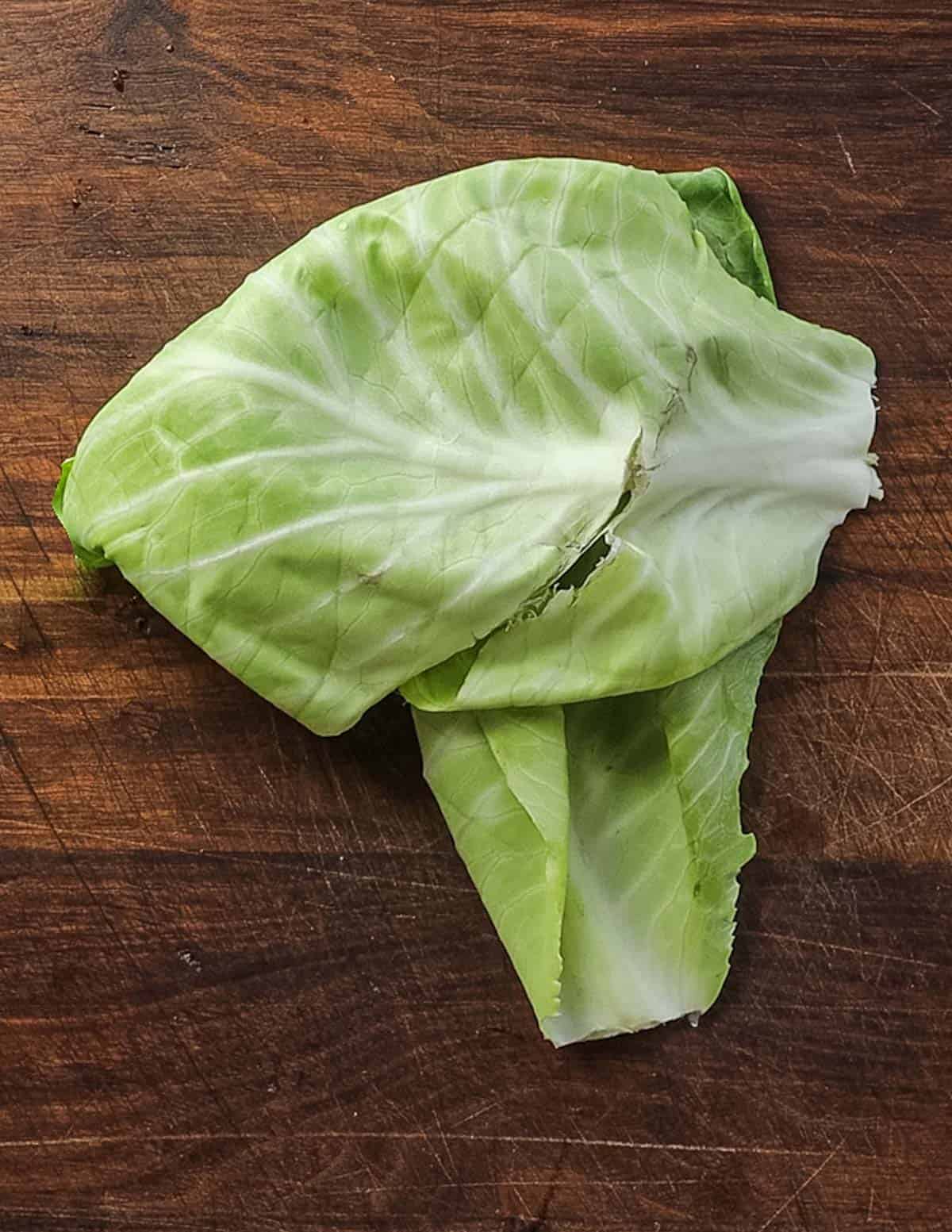
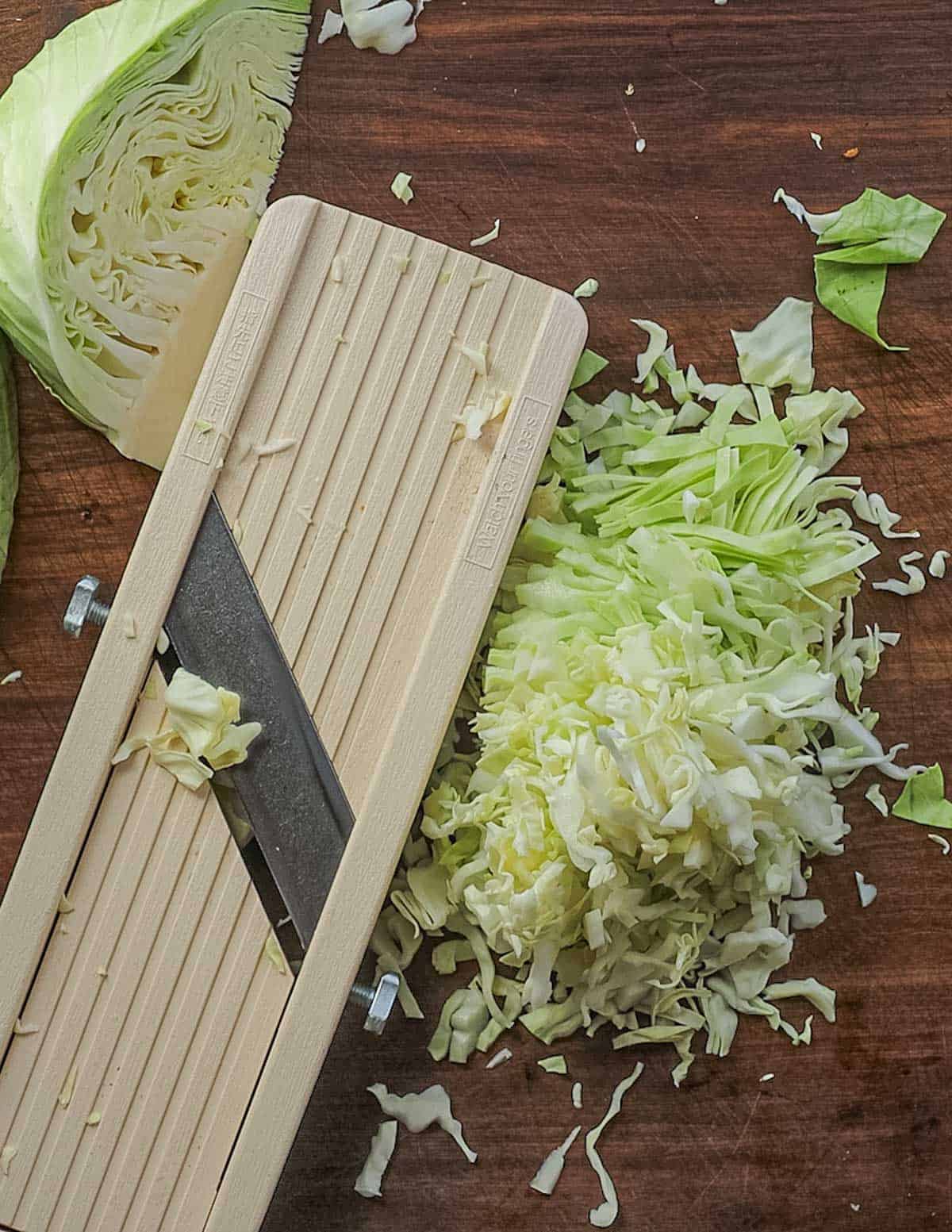

The shredded cabbage is weighed mixed with the 2% of its weight in salt, then put into the fermentation crock. Next the cabbage is pounded with a mallet or another heavy object until the water releases and a natural brine forms.
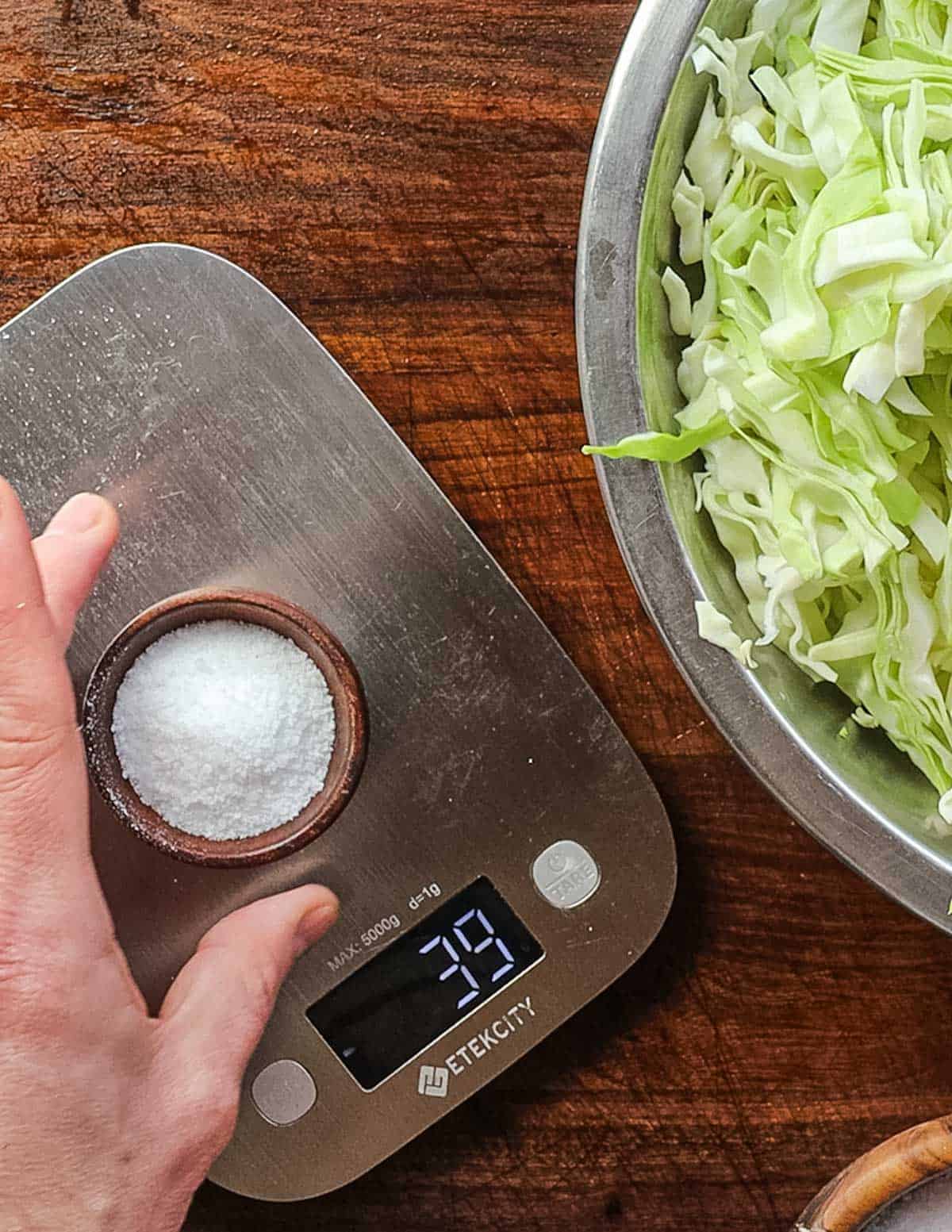

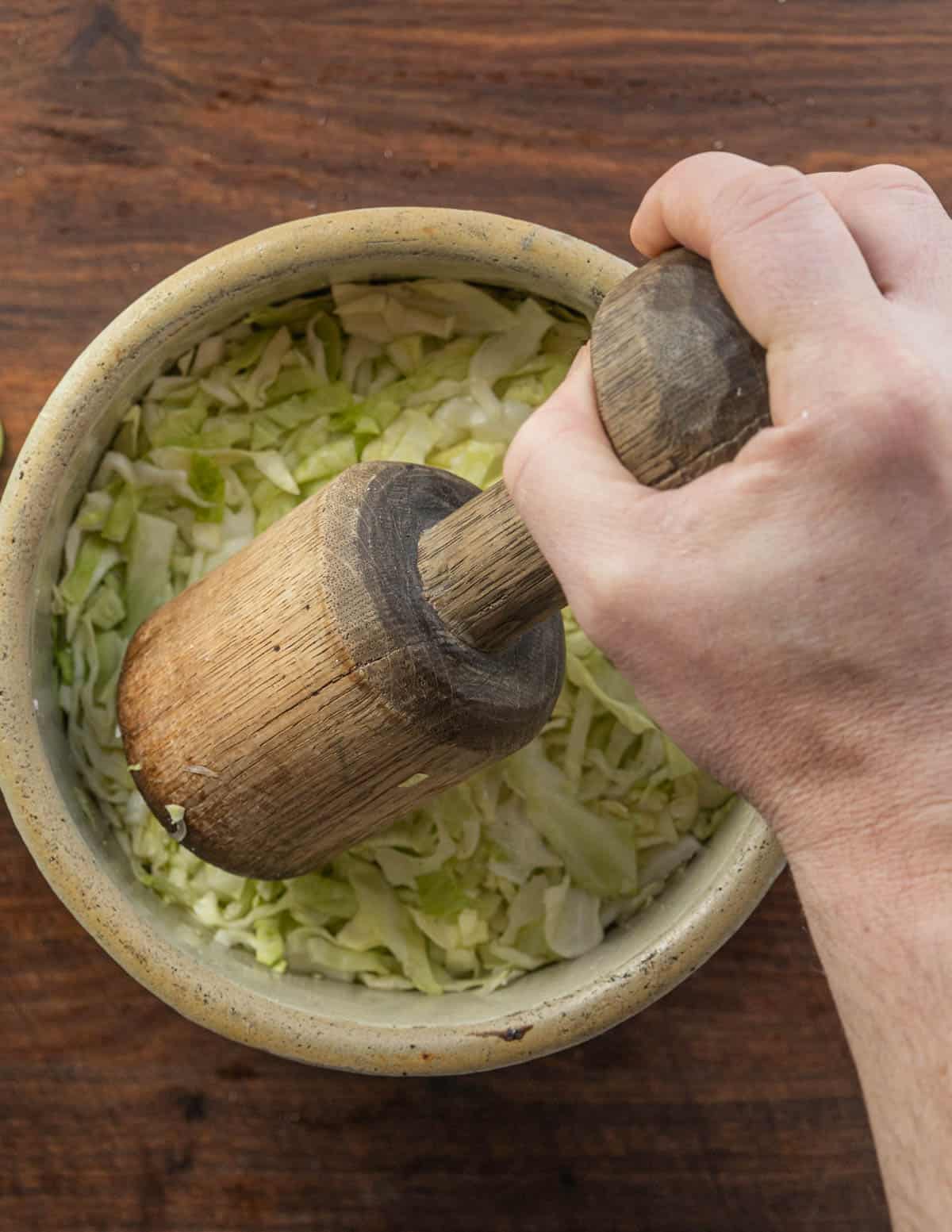
Once the cabbage is pounded in the crock the reserved outer leaves are put on top, followed by a plate and a fermentation weight. By this time the cabbage should be barely covered in its own brine.
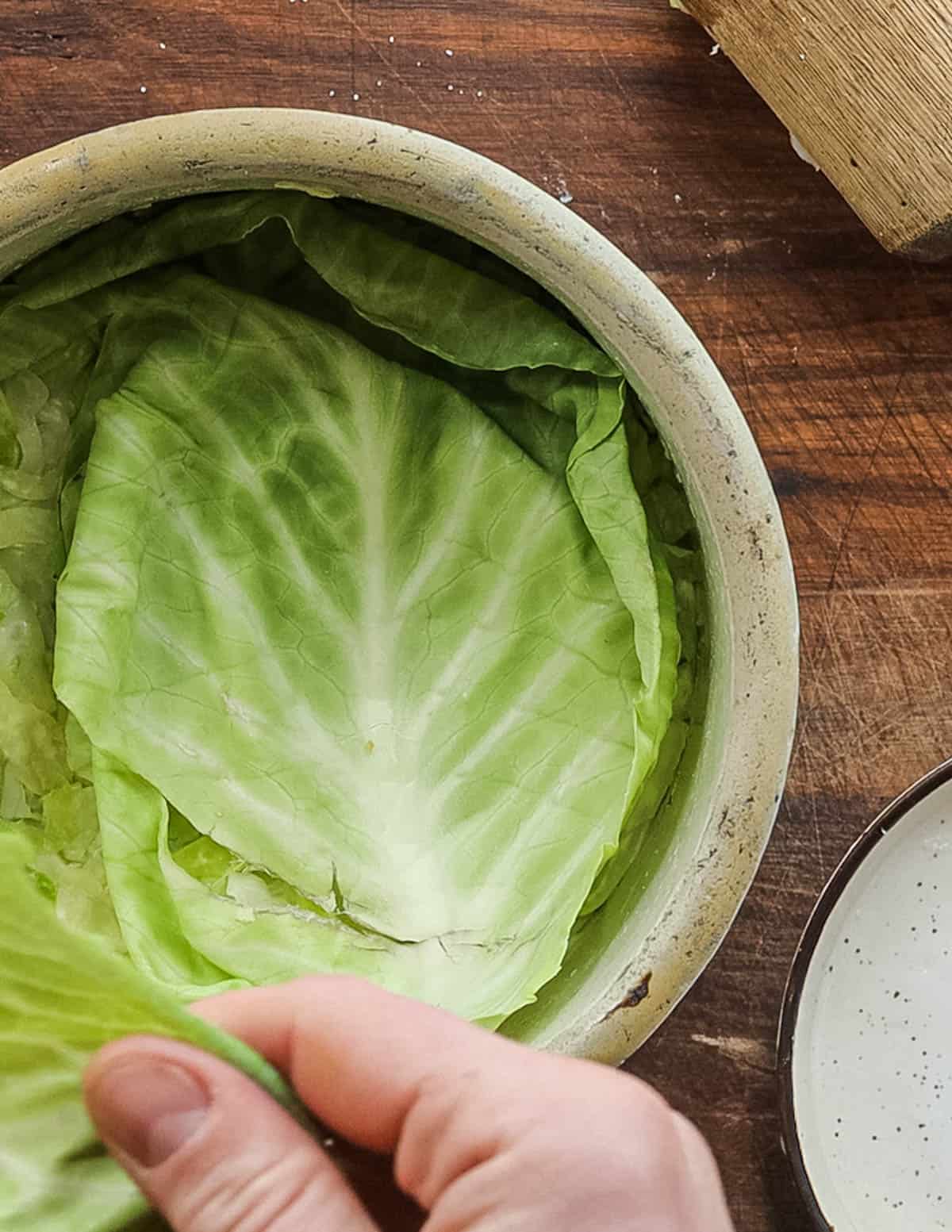
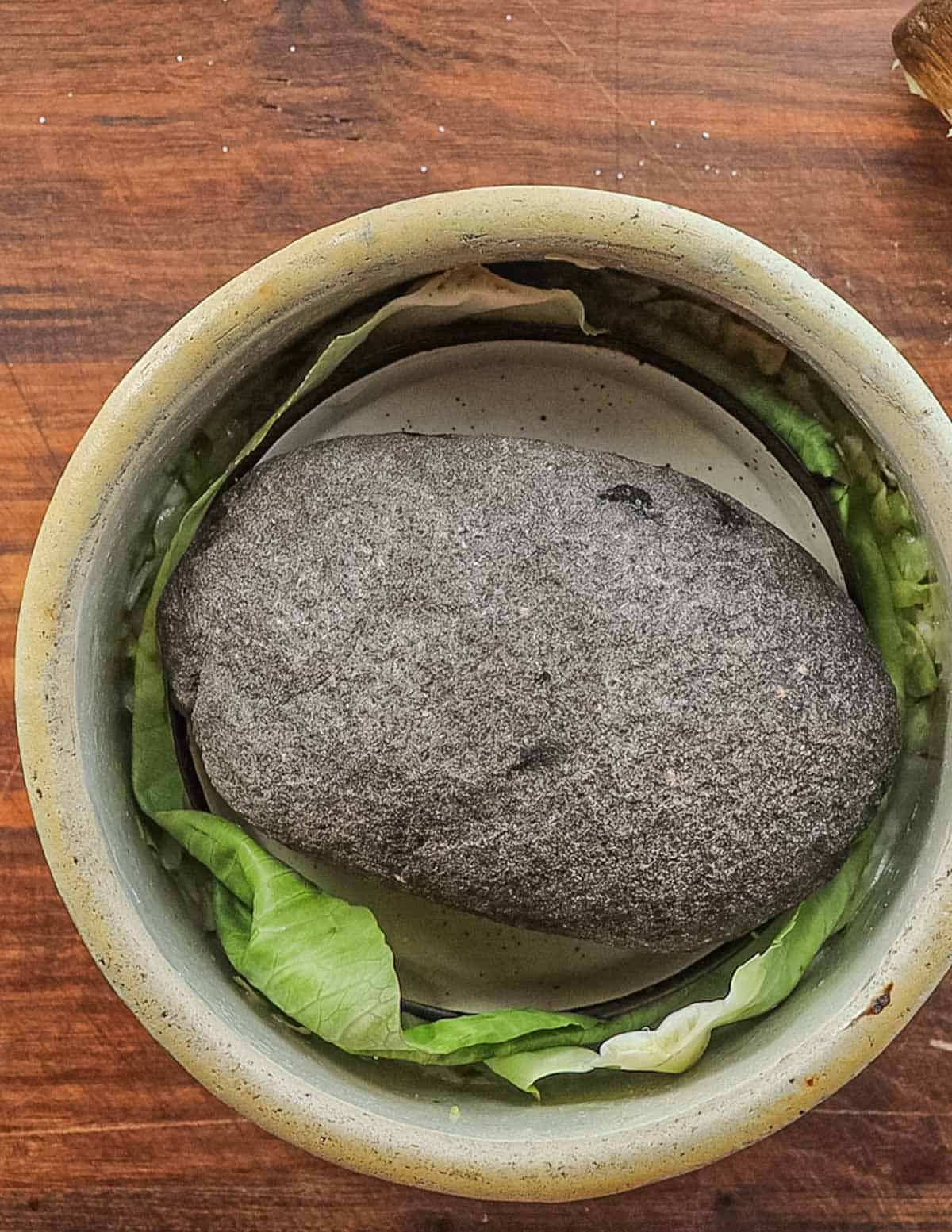
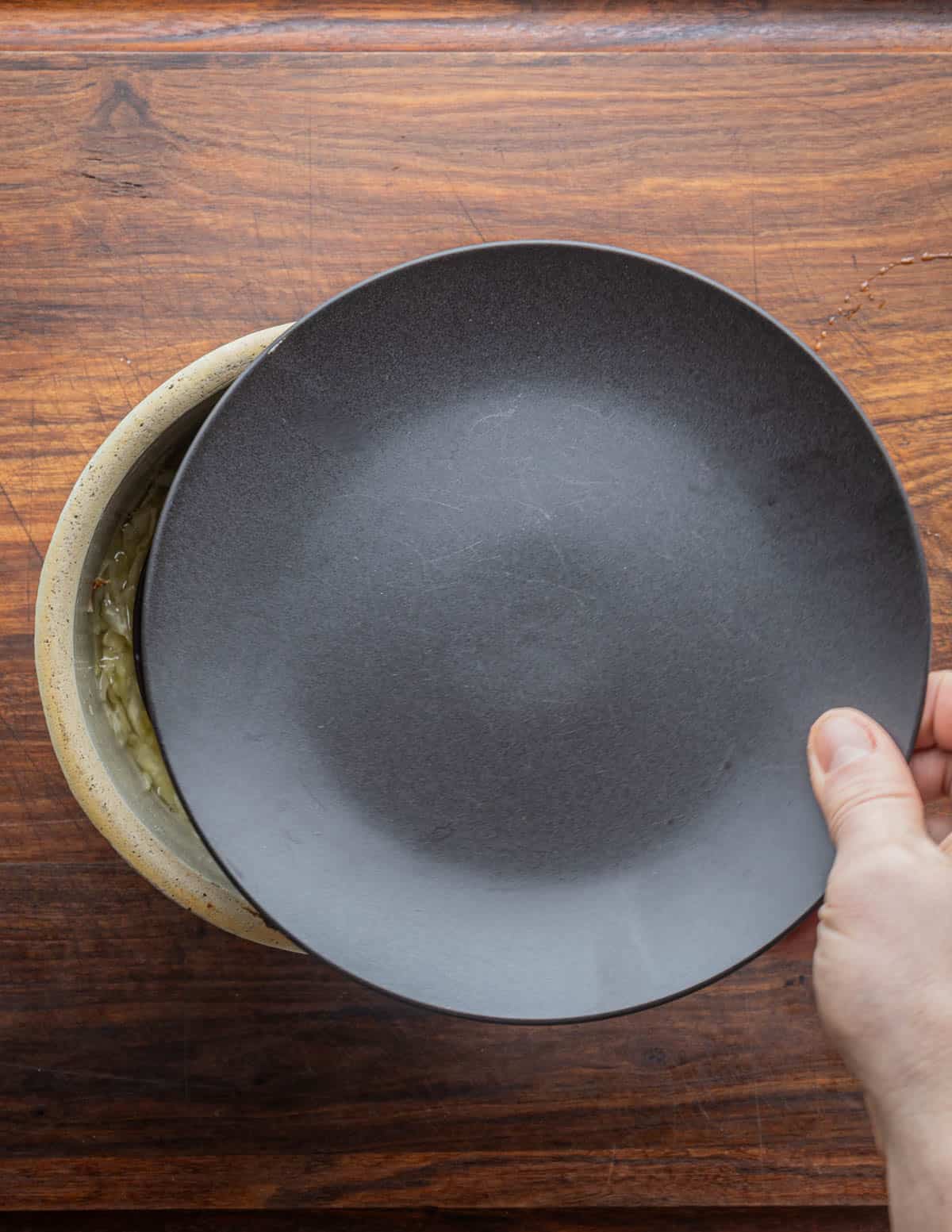
Now you put a lid on the fermentation crock, label and date it and allow the fermentation process to begin. I usually let my sauerkraut ferment for 2 weeks at least at room temperature.
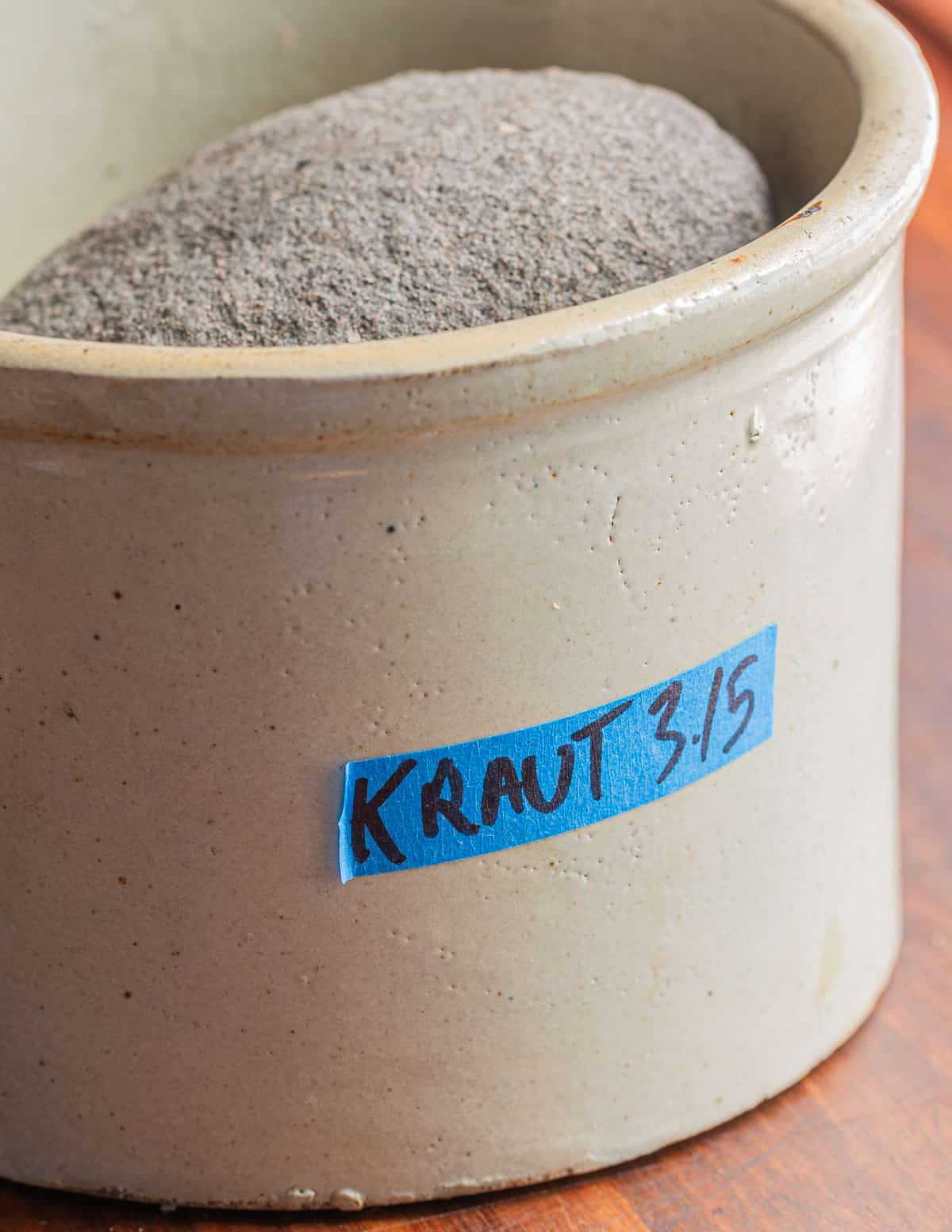
After two weeks the sauerkraut should be tangy, sour, and bubbly. The bubbles are natural and are proof the beneficial bacteria lactobacillus is present in your ferment.
Once you're pleased with the flavor you'll pack the finished sauerkraut into glass jars or a mason jar and put it in the fridge. It's important that the sauerkraut is covered at all times by the brine, which prevents it from drying out or molding. If you don't have enough brine to cover the sauerkraut in the jar, add a little salt water to make up the difference.

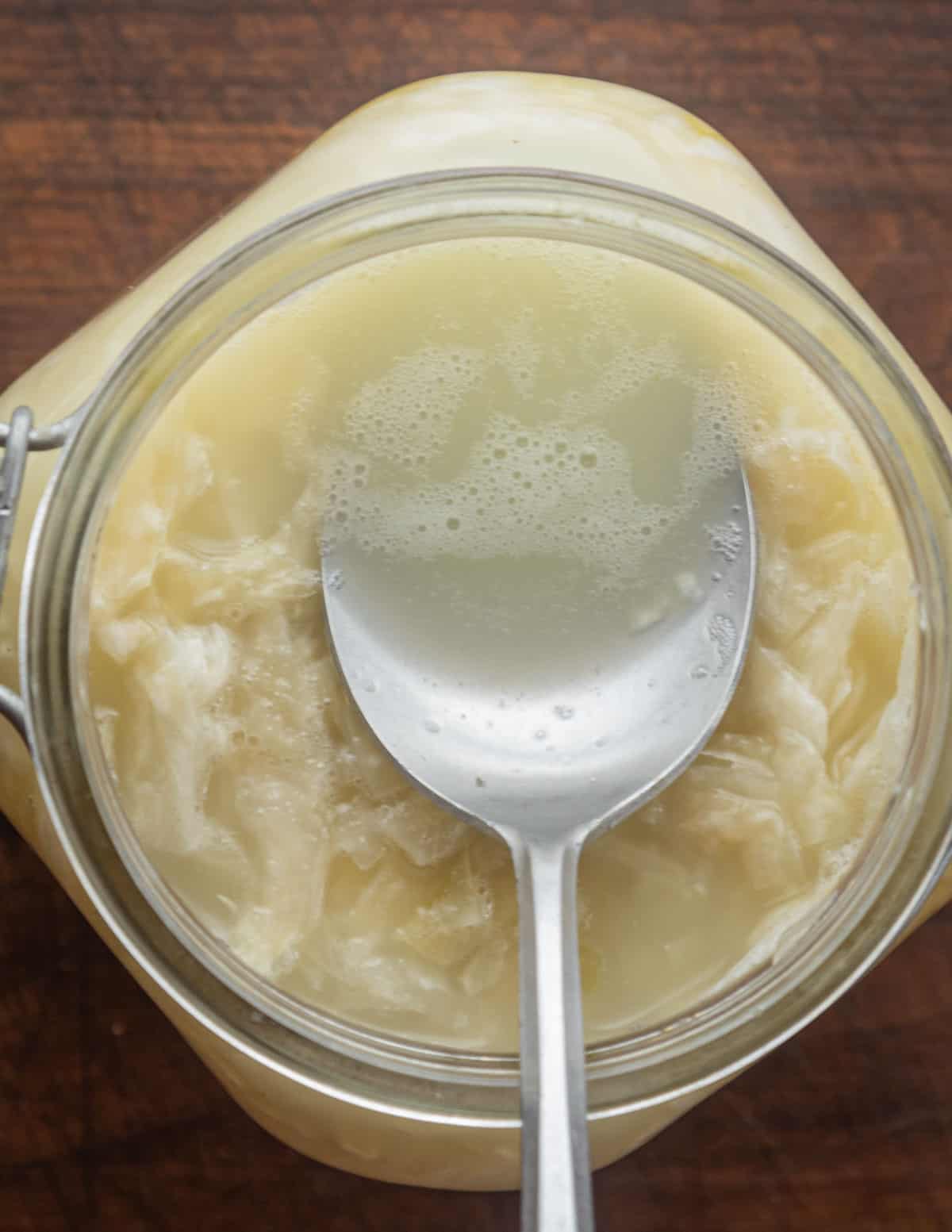
How to Fix Sauerkraut That's Too Salty
If you've made sauerkraut that's too salty for your taste it's easy to fix. All you need to do is rinse the sauerkraut with a little water. Put the sauerkraut in a colander and spray it with water, mixing and continuing to rinse until you like the taste.
Related Posts
How to Make Sauerkraut in a Crock
Equipment
- 1 Fermenting crock
- 1 Mandoline slicer, large chef knife or food processor
- 1 Fermentation weights or a clean stone
- 1 Cover for the fermentation crock use a plate in a pinch
- 1 Digital scale for weighing the salt
- 1 Mallet for pounding the cabbage
Ingredients
- 2 lbs Shredded green cabbage or other cabbage
- 18 grams Kosher salt (roughly 1 tablespoon)
Instructions
- Remove some of the outer leaves from the cabbage and save them for putting on top of the cabbage as it ferments.
- Shred the cabbage using a knife or mandoline slicer. Discard the cabbage cores.
- Weigh the cabbage in grams. Multiply the weight of the cabbage by .02, then add weigh out that amount of salt.
- Mix the cabbage with the salt and put the cabbage in the fermentation crock.
- Pound the cabbage using a mallet or other heavy tool until it's wilted and has started to release water.
- Put the reserved cabbage leaves on top of the pounded cabbage. Next put a fermentation weight or a clean stone on top and cover the crock with a lid. The cabbage should be barely covered by a layer of brine.
- Label and date the crock.
- Every few days you can check on the cabbage and stir it occasionally, pressing it back underneath the brine before putting the lid back on.
- After two weeks of fermenting at room temperature the sauerkraut will have achieved the maximum reduction in pH and is safe to can or store in the fridge.
- Put the sauerkraut in a mason jar, packing and pressing it down so that it's covered by brine. It will last a long time in the refrigerator.

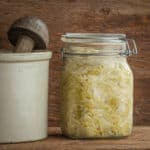
Christian
I've found two ways to save myself time on prepping it:
1. Use a bag of the coleslaw premix from the grocery store. Ours is just carrots and cabbage, which works great.
2. Freeze and thaw the bag of cabbage. The ice breaks up the cell walls and eliminates the malleting step.
Alan Bergo
Thanks Christian. I don’t use pre cut anything but the freezing trick I use to wilt kale sometimes.
Patty
Not sure how i missed the “ cover the crock” step but I am at day 5 - 2 gal crock cabbage leaves covering cabbage/ plate and stone for weights. I have bubbles coming up along the sides and tons of natural brine ( its actually covering my plate and touching the stone. I just covered crock this morning with a plate. Should it be ok?
Alan Bergo
Hi Patty. You have bubbles, which means it’s alive and things are working just as they should. Remember people have been making this for thousands of years with minimal equipment. Nothing to worry about here.
Patty
I do tend to over think things. Thanks so much for the prompt reply!
Laurie Niemi
What do you cover your crock with if it doesn’t have a lid
Alan Bergo
Hi Laurie. Here's a few meandering examples of different things I've done over the years. I'm here if you have more questions.
It's fine to cover the whole top with clingfilm or a towel you've secured with twine-anything. As long as the cabbage is completely covered with brine it will not mold. The problem is that people tend to forget about it or make it in the summer and neglect to check on it. In restaurants we will put a layer of clingfilm on the surface of the cabbage, then put a very very thick (clean) garbage bag full of ice or water on it, pressing down to make sure it's totally flush with the surface. The pressure of the water keeps out all the air and it really works well. In a pinch you can simply cover the sauerkraut with cabbage leaves, but you'll want to salt them or soak them in vinegar so they don't mold, pressing them down with a weight-anything you can find here. I used to hold cabbage under the brine by covering it with fresh cabbage leaves weighed down with a very clean, washed brick or two.
Leslee
If I don't want to store the sauerkraut in the refrigerator because it takes up room, can I can it? And just put it in the cool spot with the rest of my Canning goods in the basement.
Alan Bergo
Absolutely! Finished kraut may be canned by processing mason jars in a water bath following the guidelines for simple pickles. Usually 8-10 minutes of water bath canning per pint or so.
Bernie
You can can it, but you’ll lose the beneficial health benefits of eating fermented food. The high heat required for canning will destroy the enzymes.
Alan Bergo
Lots of people can sauerkraut though, it preserves like a dream and there's lots of ways to get beneficial bacteria in your system.